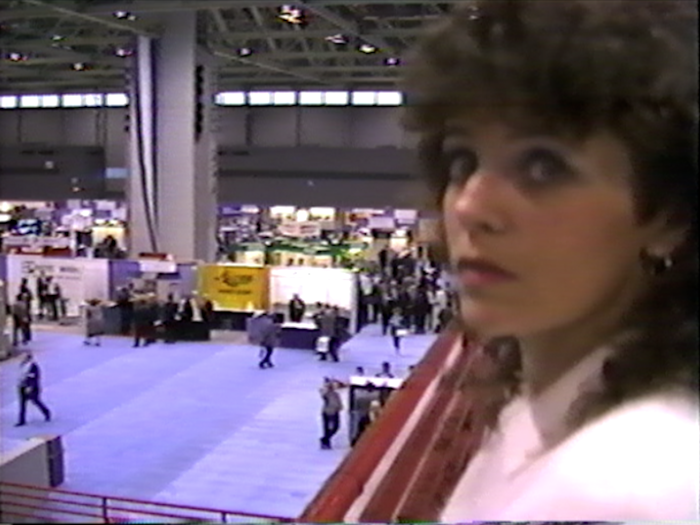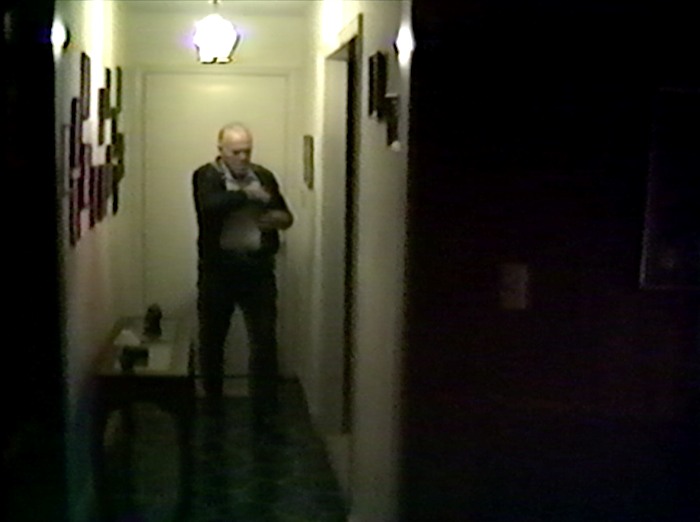An Unknown Value
During a recent computer backup, I came across some old family videos that I’d archived. A few years back, my dad lent me a box of VHS tapes that he’d recorded during the 80s and 90s. I made a day-long library trip to transfer them to hard disk, sorting through hours of basketball footage and poorly-lit Christmas gatherings.
Around 1988, both my dad and uncle received camcorders as gifts from my grandparents. This was a big deal at the time. The camcorders were monstrous and heavy – as a child, I could only bear filming for a few minutes before I got tired of hoisting it on my shoulders. My dad filmed most family holiday get-togethers, the aforementioned basketball games, a few out-of-town trips, band practice, moving days, and so on. He used the camcorder a lot and, considering the enormous pain of toting and charging it, that was no small task. It’s easy to take for granted how magical it was to capture life on tape. I now carry a higher-fidelity, pocket-sized camcorder with me at all times: my phone.
When I watch the footage now, I’m struck by the way the subjects we prioritize change as time passes. My mom and dad took a trip to Chicago for a sales convention around 1989. There is copious footage of the city’s sprawling skyline, filmed from atop the Sears Tower. There are shots of the sales convention floor and the accompanying vendor booths. But the most wondrous moment is a brief few seconds when my dad turns the camera to his right and catches my mother gazing toward the convention floor. She senses the camera, smiles, then turns away again.

At the time, I’m sure that Chicago and its sites seemed like the most important thing to film. My parents were witnessing firsthand the vibrancy of a city that they’d never visited and wanted to capture that moment for posterity. But now, over twenty years later, I don’t care at all about that dark, grainy footage of Chicago. I care even less about a convention show floor. I care about that brief glimpse of my mother, close to my age now, looking across time.
The bulk of the footage I digitized was from our Thanksgiving dinner, also in ’89. And I love it most of all because it captures the mundane aspects of family – we talk, joke, get annoyed at the camera, sit, eat, and just be. At the time, it probably seemed like a waste of time, of tape. Why film my mother washing dishes? Why film me playing with my infant cousin? Why film my grandparents putting on their coats after dinner and leaving? Many times you can hear my family ask my dad, ‘Why are you filming this?’
There is a remarkable moment when my grandfather walks down the hallway from our front door. Remarkable in its unremarkableness, really. He removes his glasses from their case and walks toward the camera. He is strong and tall, the man I remember as a child.

He can’t walk much unassisted anymore. He’s hunched and brittle, the long toll of house painting, railroad work, and naval service on his back. The simple and mundane – pulling off his glasses, walking down the hall – are no longer simple or mundane to him.
I treasure those images now. And I wonder what cast-off, incidental photos and videos sitting on my computer will one day carry an entirely different weight to them. This thought has changed the way I capture events and places. I tend to focus a lot more on the people I’m with – the way we dress, our hair, the sounds of our voices, the friends we share.
Right now, these images seem commonplace because they are part of my everyday experience. But I know, over time, they will accrete an unknown value.